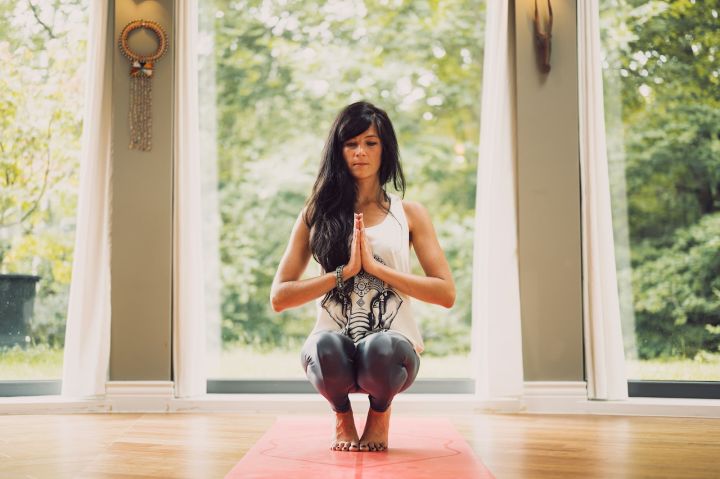If you practice yoga consistently, you may know something about meditation. It can be a short practice in class or you can practice it alone. However, many people don't know much about yoga nidra.

What is yoga nidra?
Yoga nidra is a meditation method that helps your mind, body and emotions to achieve complete relaxation. It is usually practised with audio guidance.

In sanskrit, nidra means sleep. Practitioners usually start in stretched corpse pose, which looks like taking a nap. However, in yoga nidra you are in a deeper state of consciousness and remain awake. In traditional meditation, you are awake, whereas in yoga nidra you enter a 'mental sleep' or deep conscious sleep.

Through practice, you can move from the waking state to a hypnagogic state, which is somewhere between the waking and dream states. From there, you can transition to the dream and sleep states with full awareness. This conscious yogic sleep allows you to turn your attention completely inwards.
Yoga nidra usually consists of eight stages, which include

1. Preparation
In this stage, the practitioner settles down in his or her own space. In stretched corpse pose, one can relax completely at ease and get rid of any tension or irritability. As they relax into stillness they begin to become aware of their body and then turn their attention to the breath.

2. Setting the intention
The practitioner uses this time to set the intention of the practice, called sankalpa. Kalpa translates as "Vow" And san means connection to a supreme truth, so the word is roughly "Our vow and commitment to support the supreme truth ".

3. Consciousness
The teacher will instruct the practitioner to bring awareness to different parts of the body. Keep the practitioner relaxed as they quickly focus their attention on various parts of the body, generally starting on the right side of the body, starting with the hands and moving all the way down to the feet, then doing the same exercise on the left side. Then, move from the heels to the back of the body and finally from the top of the head to the front side of the feet.

4. Breath awareness
The practitioner shifts their awareness to the breath without any attempt to do so. They may be instructed to start counting their breaths, counting backwards with each exhalation.

5. Opposite sensations
Next, the practitioner imagines feelings opposite to each other, such as hot and cold or love and hate. By focusing completely on these different sensations, it can help to increase willpower and further relaxation.

6. Visualisation
The practitioner brings their awareness to the space in front of their closed eyes, which is called chidakasha. Here, according to the teacher's instructions, they are told to visualise certain images or situations.

7. Reenactment of sankalpa
At this stage they are taken back to the sankalpa set at the beginning of the exercise to reinforce their intentions.
8. Conclusion
Finally, the practitioner is guided from contemplation. Bringing awareness back to their breath and beginning to notice their surroundings.

Benefits
Improves the quality of sleep: Studies have found that the exercise can help people suffering from sleep disorders to fall asleep more easily and can also replace naps to increase energy levels.
Reduces stress and anxiety: Stress and anxiety levels have been reduced with regular practice

How to practice yoga nidra at home
Find a relaxing environment: Make sure you create a comfortable and relaxing space. The aim of meditation is to feel relaxed, so you want to make sure your environment reflects this energy. Dim the lights or close the windows to avoid over-stimulation.

Create comfort: You can lie on your yoga mat to provide some cushioning for your back. If you are cold, cover yourself with a blanket as your body temperature may drop at rest. Please do not let any discomfort interfere with your practice.

Yoga nidra can be challenging. You may find yourself straying from the guided thoughts or even falling asleep. If the practice is not successful, do not put pressure on yourself. With practice, you will find yourself improving.

